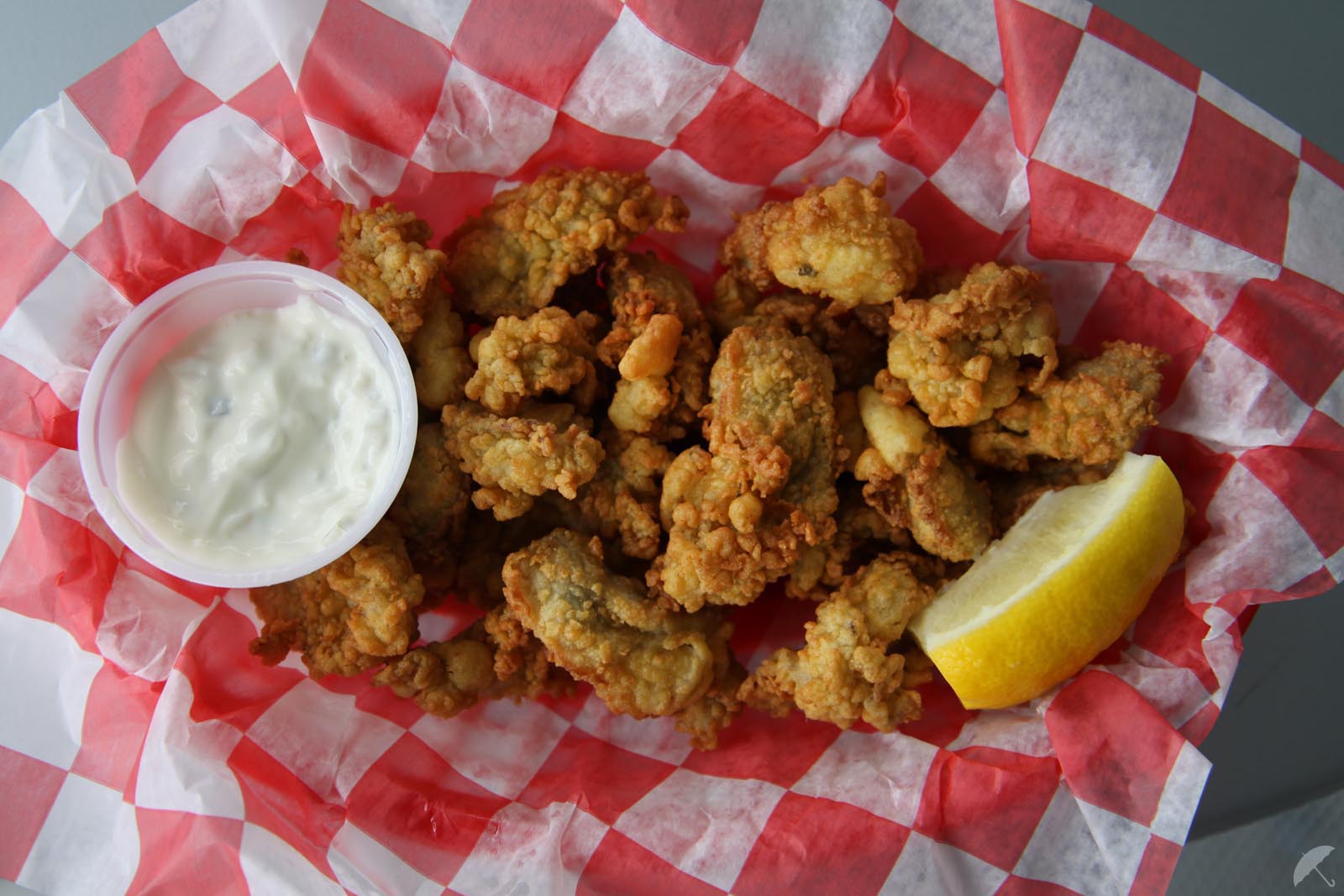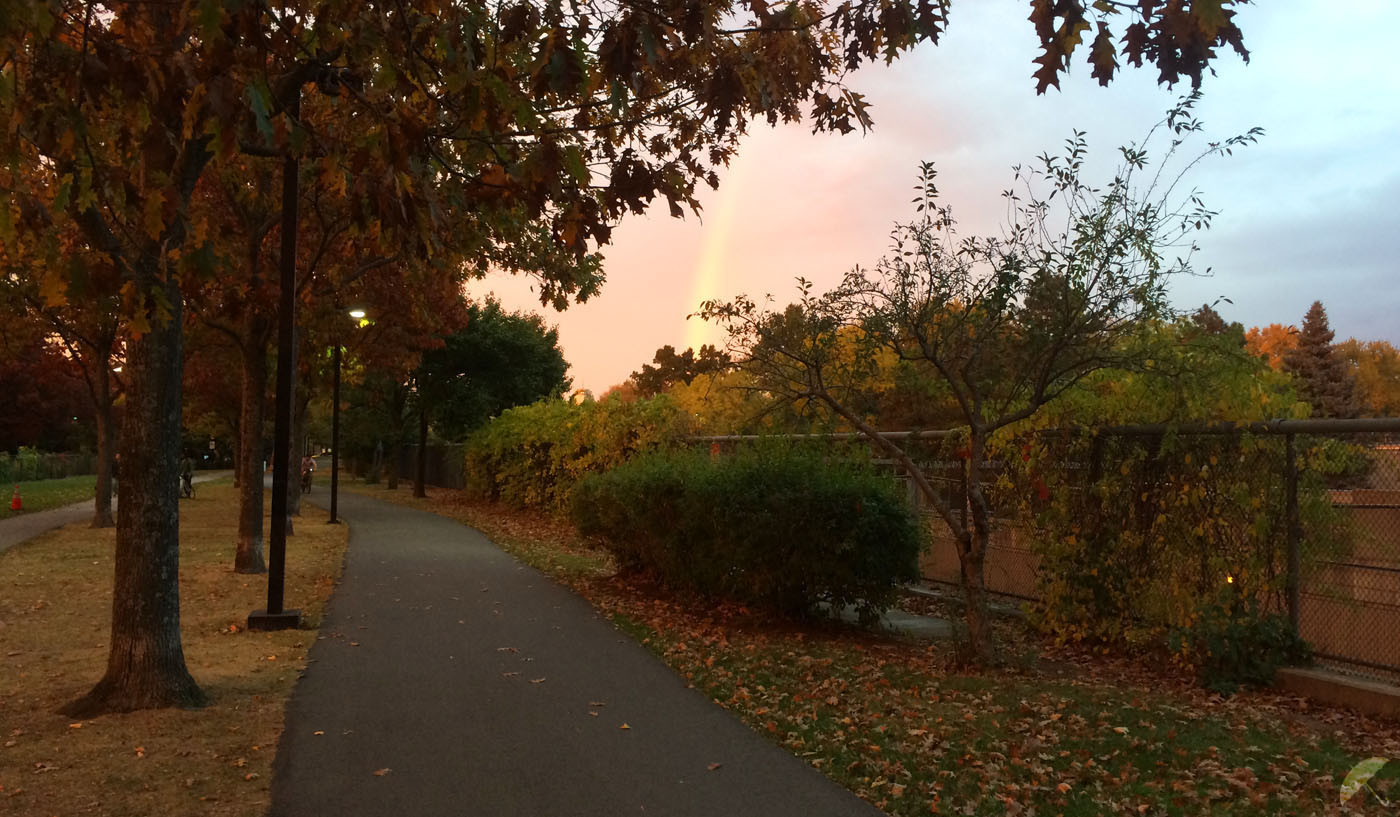Welcome to a short series of essays about a 5 day/4 night adventure we recently experienced on the island of Barbados. Hopefully this will prove useful to anyone planning an excursion to this fabulous Caribbean destination.
We discovered our very first day in Barbados that a car was essential. We initially arrived at 2:30 in the afternoon via taxi and found ourselves bound to the seclusion of our abode at Surfer’s Point (Southeast coast). Not that seclusion is a bad thing, but we wanted to make the most of our short visit and explore as much as possible as efficiently as possible. Most of the locals we spoke with, including the inn-keeper where we stayed, highly recommended a car-rental.
There are several busses that feverishly dart throughout the Island. [Some amusing Trip Advisor reviews here.] There are three bus types: larger blue busses that stick to the main roads (they whiz by at crazy speeds), smaller yellow busses (usually blasting reggae music) and then what the locals call the “ZR’s”–small white vans.
Taxi’s are a bit pricey. A short ride from the airport was $30 US. In comparison, bus rides I believe are 75¢. [Side note: the currency of Barbados is the Barbados dollar, or Bajan dollar. Both US and Bajan cash are universally accepted at a 2:1 ratio, i.e. 2 Bajan dollars = 1 US dollar.]
So, yes, it is quite possible to get around without a car. It really depends on where you are staying and/or how often you want or need to get around. If it happens there are plenty of markets, restaurants, etc. close to your hotel, or if it’s your fourth time to Barbados and you’re really only looking for a rum-blurred week at the beach, then an automobile may be unnecessary.

Barbados driving permit
During the age of exploration, Barbados was visited by Spain and Portugal but finally claimed by the British in the early-to-mid 1600’s. Despite becoming an independent state in 1966, Barbados is still, in many ways, very British. Unsurprisingly, one residual English tradition remaining intact is, yes, they drive on the left-hand side. I did have some ever-so-slight trepidation about renting a car based solely on how well I would be able to mirror such a… a deeply ingrained mode of innate right-sided perceptual navigation. Think about descending a flight of stairs–you naturally stick to the right, correct?
Aside from having to completely rewire my brain, my other trepidation was that, not unlike Boston, Bajans drive a little cray-cray. Barbados also has very few stoplights relying on round-a-bouts to direct the flow of traffic. (We have these in Boston as well.) Very few roads have signs, none of the island is on a grid and maps here are fairly useless. (Boston, Boston… also Boston.)
Wait a minute! This is all making a shit-ton of sense! Both Boston and Barbados were under British rule around the same time! Huh!
Our rental car was delivered to our residence and there was a brief formality of filling out some minor paper-work. I was issued a temporary Barbados driving permit courtesy of the Ministry of Transport and Works. [The cost for a Barbados driving permit is $10 Bajan and looks (and reads) a little like a Mad-Libs.] Our car was perfect… a diminutive silver Kia. You definitely want a compact car here. Roads are very narrow–even “main highways” can be small two-way streets with little to no shoulder.

Our little Kia parked outside The Atlantis in Bathsheba
I’m proud to say that I adjusted to the Bajan style of driving quite effortlessly. My only problem was using my left hand to engage the turn signal… anytime I initiated a turn I ended up turning on the windshield wipers. This happened… ohhhh about 200 times. I barely broke the habit on my last day. I heard this a lot: “Stop using your left hand for anything!”
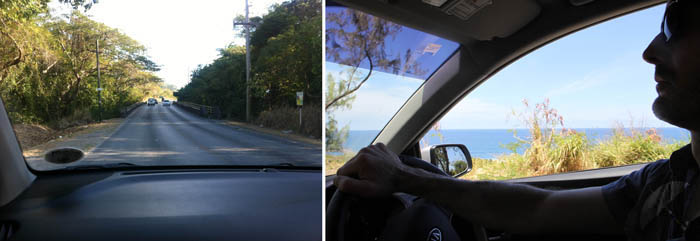
driving on the main highway
Our car didn’t come with a GPS, although no one here has an address so I don’t know that one would’ve helped us much. We relied on a tourist map to get us where we needed to go. The other various maps floating about our flat were all similar identifying roads by color: red = main highway (there’s only one), orange = major roads (moderately travelled roads), blue = very small roads (usually within a neighborhood), gray = barely roads (or “Where the fuck are we?” roads).

road names: red, orange and blue
“Take the red road to the second exit of the roundabout to the orange road where we’ll exit the first round about to the blue road.” Unfortunately said roads aren’t physically color coded–so you really never know if you are on a blue road or an orange road. Churches are good landmarks.

example of a blue road
They say that getting there is half the adventure. At one point point we ended up in the middle of a sugar cane field being harvested en route to Bathsheba on the Eastern Coast. This is something you might not plan on seeing, but stumbling upon it was really cool.

sugar cane field being harvested
The good news is that the island is only 11 miles at its widest and 17 miles at its longest. Eventually you’re going to hit water. That is, unless, you are traveling in a circle. This happened to us. We passed a bus stop in the middle of nowhere–drove around for ten minutes and magically reappeared at the same bus stop. It’s one of those preposterous scenarios that temporarily relieves the anxiety of ‘we’re lost as all hell’. You have to laugh.
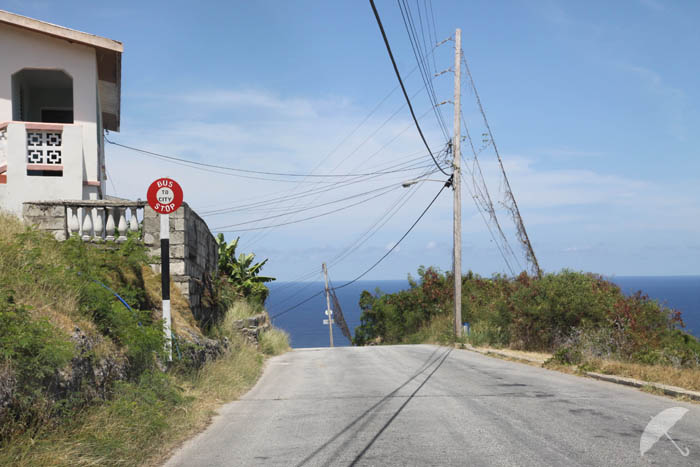
typical bus stop
Having said that, one must be careful. I think no matter where you are, being aware is critical.
We spoke to a retired Canadian couple that visits Barbados regularly. They mentioned that asking for directions can be a dubious feat. “Never let anyone into you car,” was the advice we were given. A common practice is for someone to want to “show you the way” but then demand payment upon arriving at your destination.
We found most locals to be very helpful. At the end of our first day of driving about the island we found ourselves returning to our hotel post sunset. We knew finding our place would be a challenge as our apartment was nestled deep into an unwieldy labyrinth of unmarked roads. Stopping at a small market we asked some folks how to get to Surfer’s Point. At first there was some reticence to offer assistance, but with some very basic “thank you’s” we were able to get additional information which made it much easier to find our destination. Basically, just be a nice person. A smile goes a long way anywhere.
One of the toughest things about arriving at your planned destination in Barbados is discovering that there is zero parking (Boston!), specifically if the destination is located on the coast line. It took us awhile to discover that things aren’t as far apart as you might think. It’s a small island, so the relative distance of things is difficult to discern when looking at what appears to be a large land mass on a folded map. If you pass the place you are trying to get to, just pull over at the next available parking opportunity and walk.
Most places are also right off the shoulder of the road. Be prepared for short sudden stops. In such case, if you are American, I guarantee the windshield wipers are coming on.

postcard perfect
We were able to circumnavigate most of the island during our short visit. Our only missed stop was the most Northern tip of the island.
We started up the Atlantic side of the Island known for its rugged surf, unspoiled beaches and spectacular views. Bathsheba is a must–some great lunch spots, too. If you’re looking to get away from the crowds, this is the place for you. I should point out that most of the beaches we explored on the East coast were completely barren, for this reason (along with the rough surf) it is highly advised to avoid swimming on this part of the island.


From Bathsheba we headed inland to the Andromeda Botanical Gardens–a little touristy but on the way there we had our first green monkey sighting. I was so giddy that I pulled over to snap a picture. A taxi, full of British people [conjecture], honked at me. They were not impressed. But come on! A monkey!
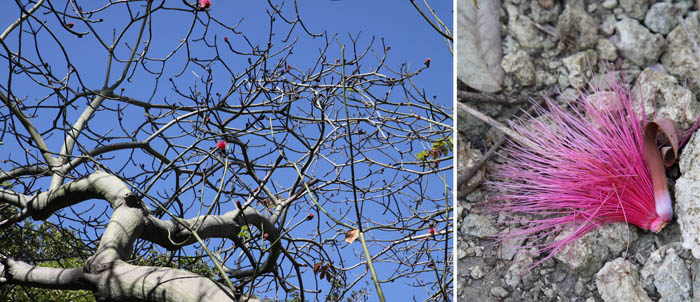
shaving brush tree

bearded trees

national bird of barbados

turquoise hanging orchid
Further inland we stopped at the Barbados Wildlife Refuge.

lookout tower overlooking the Atlantic at the wildlife refuge
The area is fenced in, but you get the sense you are in the jungle. The monkeys are free to come and go from the refuge. We actually ended up seeing a monkey hanging out on the outside rather the inside–he or she was, you know… just chillin’.

green monkey

the animal refuge turtle buffet

Dawww!
That’s it for part one!
Check back for part two where I’ll be writing about the amazing food we ate and some of the other cool spots we discovered. Also, I’ll teach you how to make an iced latté! (Clue: it’s espresso, milk and ice.)


